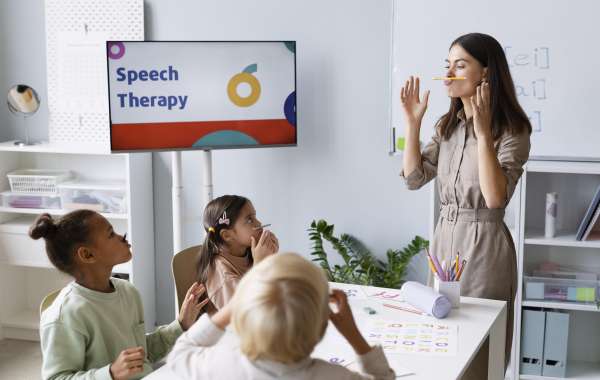Apraxia of speech is a motor speech disorder that affects a child's ability to plan and coordinate the movements necessary for speech. Children with apraxia often struggle to say sounds, syllables, and words correctly, which can lead to frustration and communication challenges. Fortunately, various effective strategies can be employed to help treat apraxia of speech in children. Some of these strategies and how they can support your child’s speech development.
Understanding Apraxia of Speech
Before diving into treatment strategies, it's essential to understand what treatment for apraxia of speech entails. Children with this condition have difficulty organizing and coordinating the muscle movements required for speech. This can manifest as inconsistent speech errors, difficulty with longer words or phrases, and challenges with articulation. The good news is that with the right support and techniques, many children can make significant progress in their speech abilities.
1. Early Intervention
Early intervention is crucial for children with apraxia of speech. The earlier a child receives treatment, the better their chances of improving their speech skills. Parents should seek out a speech-language pathologist (SLP) who specializes in childhood apraxia of speech. These professionals can conduct thorough assessments and design a personalized treatment plan that targets the specific needs of the child.
2. Intensive Speech Therapy
Intensive speech therapy sessions are vital for children with apraxia. Regular, focused practice helps reinforce the skills necessary for speech production. Therapy may include various techniques such as:
Motor Learning Approach
This approach focuses on repetitive practice and building muscle memory for speech sounds and patterns. The SLP will guide the child through specific exercises and tasks to improve their motor planning and execution for speech.
Prompts for Restructuring Oral Muscular Phonetic Targets (PROMPT)
PROMPT therapy involves using tactile cues and prompts to help children produce speech sounds. The therapist physically guides the child’s articulators (lips, tongue, etc.) to create correct sounds, facilitating better understanding and production.
3. Visual and Auditory Cues
Incorporating visual and auditory cues can significantly enhance speech learning for children with apraxia. This strategy includes:
Visual Supports
Using pictures, symbols, or gestures can help children understand and remember speech sounds. Visual aids serve as reminders and prompts during speech practice, reinforcing the connection between the visual and auditory components of communication.
Auditory Feedback
Children benefit from hearing their speech through recordings or through real-time feedback from their therapist. This auditory input allows them to compare their speech production with the correct model, facilitating self-correction and improvement.
4. Home Practice and Support
Parents play a vital role in their child's speech development. Consistent practice at home can reinforce what is learned during therapy sessions. Here are some ways parents can support their child's progress:
Create a Positive Environment
Encouragement and praise are essential. Celebrate small successes and maintain a positive attitude towards speech practice. This will help build the child's confidence and motivation to improve.
Incorporate Speech Practice into Daily Activities
Integrating speech practice into everyday routines can make learning more engaging. Encourage your child to describe their day, name objects, or tell stories during family time. This will provide opportunities for speech production in a natural context.
5. Collaborative Approach
A collaborative approach involving parents, therapists, and educators is essential for the effective treatment of apraxia of speech. Regular communication among all parties ensures that everyone is on the same page and can provide consistent support for the child’s speech goals.
Conclusion
Treating apraxia of speech in children requires a combination of early intervention, intensive therapy, and supportive home practices. By employing these strategies, parents and therapists can work together to help children overcome the challenges associated with this disorder. For personalized support and effective online speech therapy, consider Speech Up. Our licensed speech therapists are here to help your child communicate at their best. Contact us today and take the first step toward improving your child's speech and communication skills!




